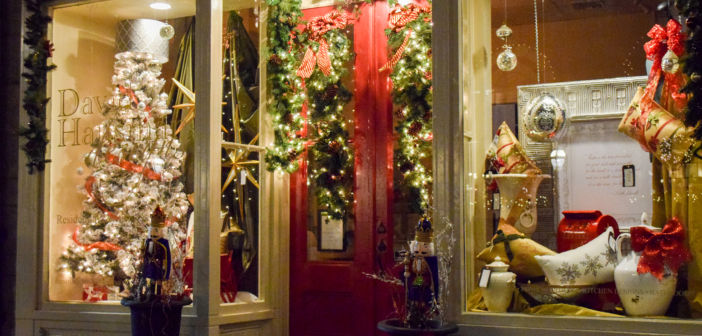Christmas is especially important to the people of Bethlehem.
Founded in 1741 by Moravian settlers, the city was christened “Bethlehem” on Christmas Eve of that year. In 1937, capitalizing on its name and history, Bethlehem was officially given the title “the Christmas City.”
Since then, Christmas attractions have become a major tourism event for Bethlehem, bringing in visitors to patronize its shops and visit its historical landmarks. To show the city’s best side to the world, Christmas decorations have become a major aspect of Bethlehem’s identity.
Though the city contributes some funding, Bethlehem residents organize and fund the majority of the city’s decorations.
The Citizen’s Christmas City Committee, which is part of the Greater Lehigh Valley Chamber of Commerce, has been helping to fund Bethlehem’s Christmas decorations since the 1960s. According to the city’s website, the committee raises over $15,000 each year and has raised more than a million dollars since its inception in order to make Bethlehem shine each winter.
However, Bethlehem is a divided town — not only socioeconomically and culturally, but also on the topic of Christmas lights.
Bethlehem councilwoman Olga Negron said for years, Bethlehem’s Christmas lights were a plain, white color and created a simple, uniform look through the whole city that North Side residents preferred.
South Side residents, however, wanted multi-color Christmas lights to represent their diverse cultures.
“I think (it’s) symbolic (because) this is where the future residents of Bethlehem would come hot off the boats,” said Roger Hudak, the chairman of the Mayor’s South Side task force. “All different colors and all different languages from all over the world.”
In 1985, the South Side finally got its wish, according to The Morning Call archives. In the years since, the north and south sides of the city each have their respective Christmas light colors, with the white and colored lights alternating on the bridges between the two halves of the city.
“We like the color lights, and we’re keeping them,” Hudak said.
In addition to the conflict over the color of the lights, South Side Bethlehem showcases noticeably fewer lights than the North Side. The majority of the historic district and Main Street area of North Bethlehem is covered in decorations, while the South Side displays only a few lights on Third and Fourth streets.
Negron said the disparity is mainly due to the fact that tourism revenue during the Christmas season is much higher on the North Side and because the city itself does not control the decorations.
The answer to fixing this disparity may not lie solely with fixing the distribution of lights, but changing the underlying problems that create the divisions between the North Side and the South Side in the first place.
“In these superficial matters like the Christmas lights, what you are actually seeing being enacted is people’s fears and anxieties about wealth and poverty,” said Seth Moglen, an associate professor of English and a South Side resident. “In other words, it becomes a symbolic demonstration of difference which is surrounded by anxiety, which most people are unwilling to talk honestly about.”
Though it may not be the core issue in the Bethlehem community, the Christmas lights have become a visual metaphor for the differences, both negative and positive, between the two halves of the city.






Comment policy
Comments posted to The Brown and White website are reviewed by a moderator before being approved. Incendiary speech or harassing language, including comments targeted at individuals, may be deemed unacceptable and not published. Spam and other soliciting will also be declined.
The Brown and White also reserves the right to not publish entirely anonymous comments.
2 Comments
This article attempts to portray that there is a conflict in the city about the Christmas lighting colors. That is not the case at all & the fact that the Historic District maintains its traditional Moravian white lights & candles is what makes Bethlehem attractive to heritage travelers looking for authenticity.
Similarly the Southside decision to use colored lights helps to define to visitors the distinctly different eras of the development of Bethlehem. To try to make that into an economic issue of the difference in wealth of the residents is absurd. The fact that the Northside markets its history & the Southside markets its arts & cultural attractions makes Bethlehem unique.
There is no reason for both downtowns to be trying to emulate one another. Moravian College is a liberal arts college & the 6th oldest college in the country & the first to educate women. Lehigh University was founded over 100 years later by an industrialist to educate men in the sciences, Engineering & Business. They represent differences just like their communities that developed in different eras of our nation.
Just like there is no reason to make these 2 colleges similar because they are in the same city, so too is there is no reason to force one side of the river to do the same as the other. Worse yet is to try to create these differences into a class warfare.
Well stated, Bruce. I was thinking the same thing as I read this article.